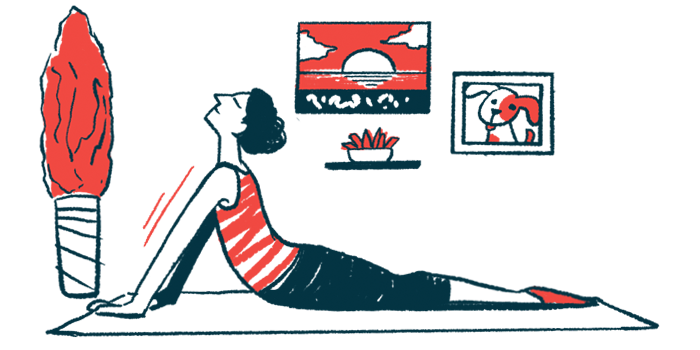Yoga better than physical therapy at improving MS quality of life: Study
Effects on walking, balance, fatigue were also analyzed and showed no differences
Written by |

A three-month yoga program was significantly better than physical therapy at improving quality of life in people with multiple sclerosis (MS), a Russian study reports.
Significant effects were observed in patients’ physical and social functioning, life activity, and mental health, researchers found.
“Regular yoga classes under the guidance of qualified staff are a promising method of non-drug rehabilitation of patients with multiple sclerosis (MS) with motor disorders,” they wrote in “Yoga vs Physical Therapy in Multiple Sclerosis: Results of Randomized Controlled Trial and the Training Protocol,” which was published in Annals of Neurosciences.
Some of the most common symptoms of MS include muscle weakness and stiffness, walking difficulties, and fatigue, with patients often needing rehabilitation to improve functionality and quality of life.
While physical therapy is often what comes to mind , yoga has been shown to effectively reduce depression, pain, fatigue, and improve mobility and quality of life with MS. It may also be more accessible, as programs could be applied in the many yoga and fitness centers in large cities.
To see if yoga is more effective than physical therapy, researchers in Russia compared the impact of a yoga program versus physical exercise or no exercise on quality of lifeon several MS symptoms, such as walking problems, balance difficulties, and fatigue.
The researchers contacted patients followed up as outpatients in a hospital in Moscow who’d been diagnosed with MS. A total of 56 participants were included and randomly assigned to three groups: yoga (26 patients), physical therapy (16 patients), or no exercise (14 patients).
Significant improvement in quality of life with yoga
Yoga and physical therapy sessions were held twice weekly for 12 weeks. The classes lasted about 60-75 minutes and took place in a specially equipped hall using supporting materials under the guidance of experienced trainers.
Yoga classes consisted of 13 basic and alternative poses, designed to ensure participants’ safety while letting them progress and improve their condition.
The physical therapy consisted of a 10-15 minute warmup, including exercises for stretching and flexibility; 25-35 minutes of endurance training, aerobic exercises, muscle strength, coordination, and balance exercises; and 10-15 minutes of relaxation and breathing.
In the no-exercise group, participants led their normal lifestyle without the regular practice of yoga or regular physical exercises and were placed on a waiting list for yoga after the three-month intervention.
Fifteen patients (57.7%) in the yoga group, nine (56.3%) in the physical therapy group, and 12 (85.7%) in the no-exercise group completed the study. Noncompliance with the protocol in both the yoga and physical therapy groups, demonstrating insufficient motivation for physical rehabilitation, was the most frequent reason for dropping out, the researchers noted.
“These studies are very important because they could allow finding approaches to increase the motivation of MS patients and to improve their rehabilitation,” the researchers wrote.
The average age was not significantly different between the groups, but patients in the yoga group had been living with MS less than the other two groups (12.6 years vs. 18 years in the physical therapy and no-exercise groups) and had the lowest proportion with progressive MS.
The physical therapy group had the fewest patients taking disease-modifying treatments — 55.6% versus 100% in the yoga group and 66.7% in the no-exercise group.
The researchers found no differences on the programs’ impact on symptoms. All three groups had similar scores on the Berg balance test, which measures balance and posture, on the six-minute walking test, which assessed walking function, or in fatigue scores.
The researchers noted that “a 12-week training program might be not enough for statistically significant improvement,” especially when considering the long disease duration (about 13 years) and significant neurological disability among these patients. Other studies have reported significant differences in balance, fatigue, and walking after yoga programs lasting six months.
While yoga had no impact on symptoms, patients in the yoga group showed a significant improvement in their quality of life scores, as measured with the 36-item short form health survey (SF-36). In particular, yoga patients scored better on measures of physical and social functioning, life activity, and mental health after 12 weeks.
Only two patients in the physical therapy group reported side effects, including pain and back pain. No side effects were reported with yoga.
“In this randomized controlled trial, we have demonstrated the efficiency of specially designed Iyengar yoga program over the [physical therapy] program in [several quality of life items] of MS patients,” the researchers wrote, noting more research is needed to “examine the impact of yoga on clinical patient improvement and quality of life indicators.”






